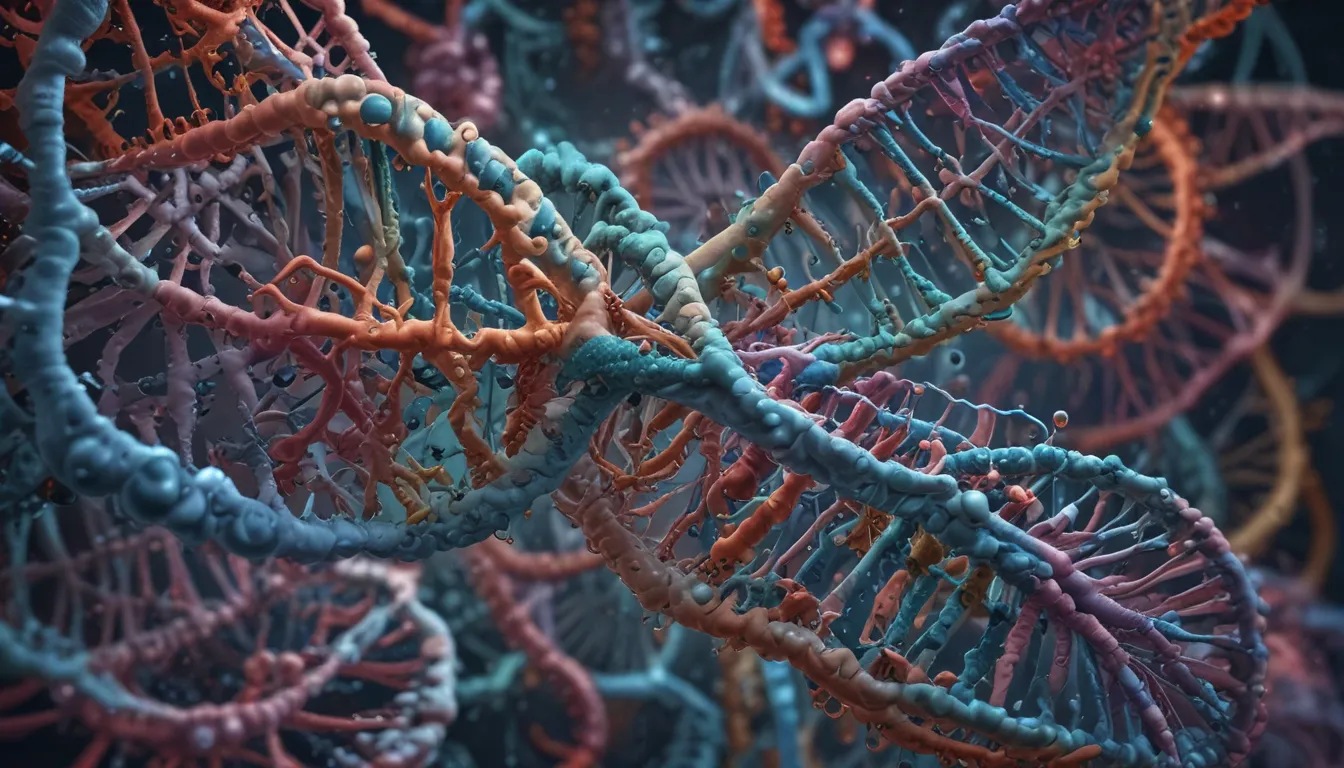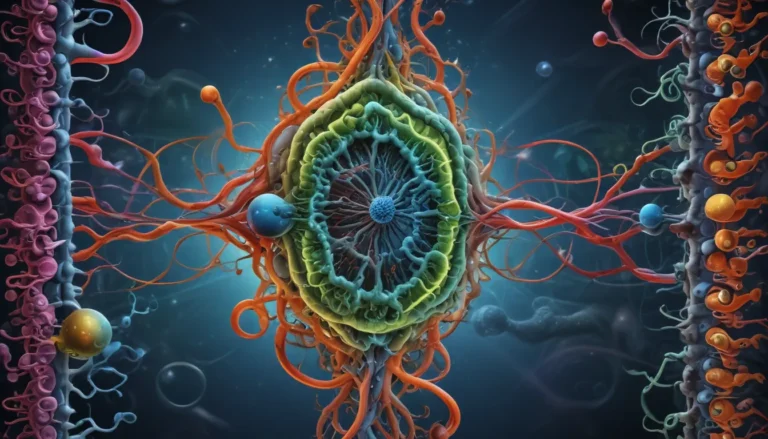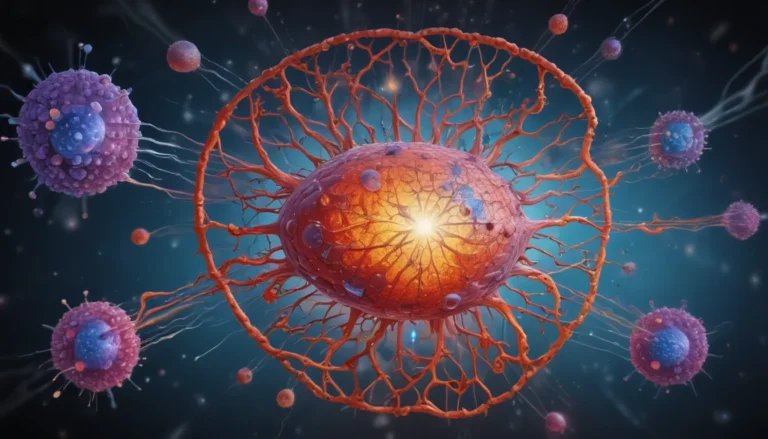A Note About Images: The images used in our articles are for illustration purposes only and may not exactly match the content. They are meant to engage readers, but the text should be relied upon for accurate information.
Have you ever wondered how our genetic information is meticulously orchestrated to create the complex symphony of life? Gene expression regulation is the conductor behind this intricate process, guiding the activation of genes at the right time and in the right cells to ensure our biological functions run smoothly. As we dive into this captivating realm, we will uncover 15 fascinating facts that shed light on the significance and complexity of gene expression regulation. From the role of transcription factors to the impact of environmental factors, each fact unravels a different facet of this fundamental biological process.
Gene Expression Regulation: The Maestro of Cellular Symphony
- Gene expression regulation acts as a conductor directing a symphony of cells, ensuring each plays its unique part in the body’s orchestra.
- Just like a recipe, gene expression regulation determines which ingredients (genes) are used and how they’re combined to create the final dish (cell or organism).
Cell Differentiation: The Magic of Gene Expression
Gene expression regulation is essential for cell differentiation, allowing cells to acquire distinct identities and specialize in performing specific functions within the body. This precise control of gene expression is the cornerstone of cellular diversity and functionality.
Multilevel Regulation: A Symphony of Gene Control
Regulation of gene expression can occur at various levels, including transcriptional, post-transcriptional, translational, and post-translational processes. Each level offers unique mechanisms to fine-tune gene expression and ensure optimal cellular function.
Transcription Factors: The Masters of Gene Regulation
Transcription factors are pivotal proteins that bind to specific DNA sequences and regulate gene transcription by either activating or repressing gene expression. They play a central role in orchestrating gene expression by influencing the initiation and rate of transcription.
Epigenetic Modifications: The Silent Conductors of Gene Expression
Epigenetic modifications, such as DNA methylation and histone modification, can alter the accessibility of genes to transcription factors and enzymes, thereby regulating gene activation or repression. These modifications provide an additional layer of gene control beyond the genetic code.
MicroRNAs: The Fine-tuners of Post-Transcriptional Regulation
MicroRNAs are small RNA molecules that modulate gene expression at the post-transcriptional level by binding to messenger RNA (mRNA) and either degrading it or inhibiting its translation. This mechanism allows for precise fine-tuning of gene expression after transcription.
Environmental Influences: The External Symphony Players
External factors such as temperature, light, nutrients, and stress can impact gene expression through gene-environment interactions. Organisms employ this mechanism to adapt and respond to their surroundings, showcasing the dynamic nature of gene regulation.
Gene Regulatory Networks: The Intricate Choreography of Gene Expression
Multiple genes and their regulatory elements interact within complex networks, forming intricate systems that coordinate gene expression. These networks ensure precise timing and coordination of gene activation and repression, maintaining cellular homeostasis.
Developmental Significance: The Symphony of Organ Formation
During embryonic development, precise gene expression regulation is crucial for the formation of tissues and organs. Misregulation of genes can result in developmental abnormalities and diseases, highlighting the importance of gene control in embryogenesis.
Cancer and Gene Expression: The Disrupted Symphony
Dysregulation of genes involved in cell cycle control, DNA repair, and apoptosis can lead to uncontrolled cell growth and tumor formation. Understanding gene expression regulation in cancer is essential for developing targeted therapies to combat this disease.
Feedback Loops: The Self-Regulating Symphony
Feedback loops involving transcription factors and their target genes create self-regulating mechanisms in gene expression. Positive and negative feedback loops help maintain homeostasis and fine-tune gene expression levels in response to internal and external cues.
Alternative Splicing: The Symphony of Gene Expression Diversity
Through alternative splicing, multiple protein isoforms can be generated from a single gene, expanding the diversity of gene expression. This process enables cells to produce different functional proteins from the same genetic blueprint, enhancing cellular functionality.
Non-Coding RNAs: The Symphony Conductors
Non-coding RNAs, such as long non-coding RNAs and circular RNAs, play essential roles in gene expression regulation by interacting with chromatin, transcription factors, and other RNA molecules. They serve as crucial regulators of gene expression, adding complexity to the symphony of genetic control.
Cellular Reprogramming: The Symphony of Cell Transformation
Induced pluripotent stem cells (iPSCs) can be generated through cellular reprogramming, rewiring gene expression programs to revert mature cells to a pluripotent state. This process showcases the flexibility and plasticity of gene expression regulation in cellular transformation.
Genetic Mutations: The Disruptors of Genetic Harmony
Genetic mutations in regulatory regions or coding sequences can disrupt normal gene expression, leading to genetic disorders and diseases. Understanding how genetic mutations affect gene regulation is essential for diagnosing and treating genetic conditions.
Dynamic Gene Expression: The Symphony of Adaptation
Gene expression is a dynamic and responsive process that adjusts to internal and external cues, allowing cells to adapt to changing conditions and maintain optimal functionality. The dynamic nature of gene expression highlights its importance in cellular adaptation and survival.
Delve Deeper into Gene Expression Regulation
Understanding the intricate mechanisms of gene expression regulation is a fundamental aspect of biology that unravels the mysteries of life. Each fact presented in this journey highlights the complexity and importance of gene control in shaping the proper functioning and development of living organisms.
Gene Expression Regulation: A Symphony of Life
In conclusion, gene expression regulation is a complex and fascinating process that plays a pivotal role in all living organisms. Deciphering the mechanisms that govern gene expression is essential for understanding development, maintaining cellular function, and combating disease. With advancements in molecular biology and genetics, scientists continue to unveil the intricate network of factors that control gene expression, offering new possibilities for medical advancements and targeted therapies.
FAQs: Unveiling the Answers to Your Questions
- What is gene expression regulation?
-
Gene expression regulation refers to the control mechanisms that determine when and to what extent a gene is transcribed and translated into a functional protein.
-
Why is gene expression regulation important?
-
Gene expression regulation is vital for proper development, cellular function, and environmental responsiveness, orchestrating complex cellular processes and enabling organismal adaptation.
-
How is gene expression regulated?
-
Gene expression regulation involves a combination of genetic, epigenetic, and environmental factors, encompassing transcriptional control, post-transcriptional modifications, chromatin remodeling, and regulatory protein interactions.
-
What are transcription factors?
-
Transcription factors are proteins that bind to specific DNA sequences and regulate gene transcription by activating or repressing gene expression, modifying chromatin structure, and interacting with other proteins.
-
Can gene expression be manipulated?
- Yes, gene expression can be manipulated through techniques such as RNA interference (RNAi), CRISPR-Cas9 gene editing, and small molecule modulation of gene regulatory networks. These approaches offer avenues for targeted gene control and therapeutic intervention.
Unlock the mysteries of gene expression regulation and embark on a journey into the captivating world of genetic control. Each discovery unveils a new layer of complexity and significance, offering insights into how genes shape life’s intricate tapestry. Explore the wonders of transcriptional regulation, delve into the nuances of epigenetics, and uncover the secrets of genetic expression diversity. The symphony of gene regulation awaits your curiosity and fascination, inviting you to unravel its mysteries and appreciate the intricate machinery that dictates our biological existence. Let the symphony of gene expression regulation inspire your quest for knowledge and ignite your passion for uncovering the secrets of life’s genetic choreography.






